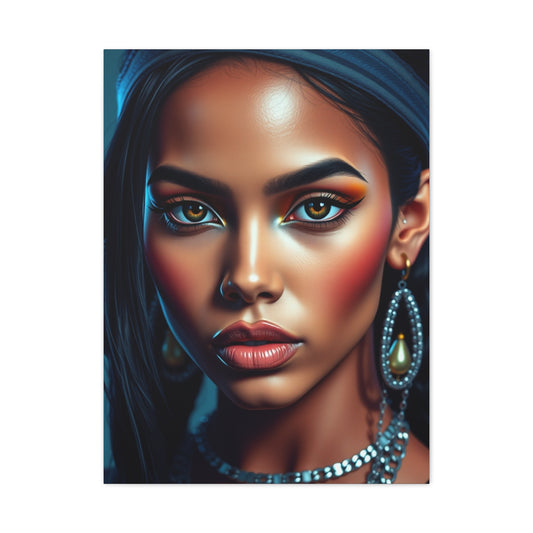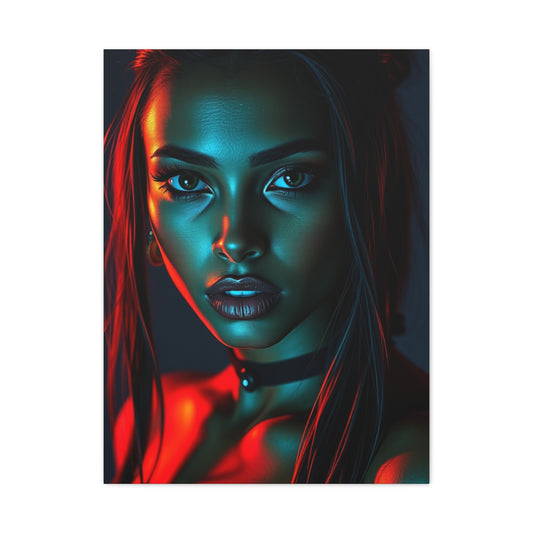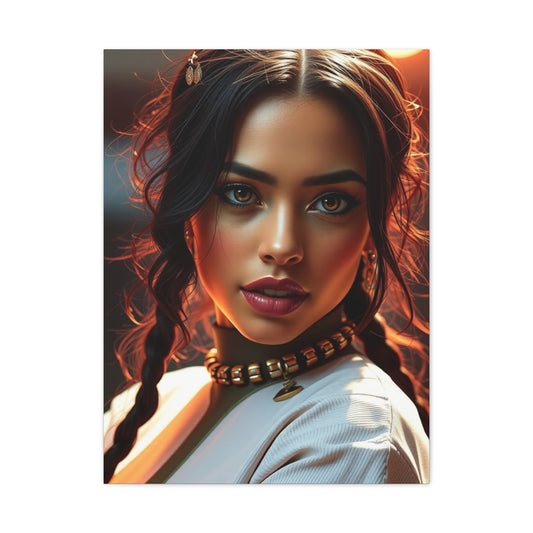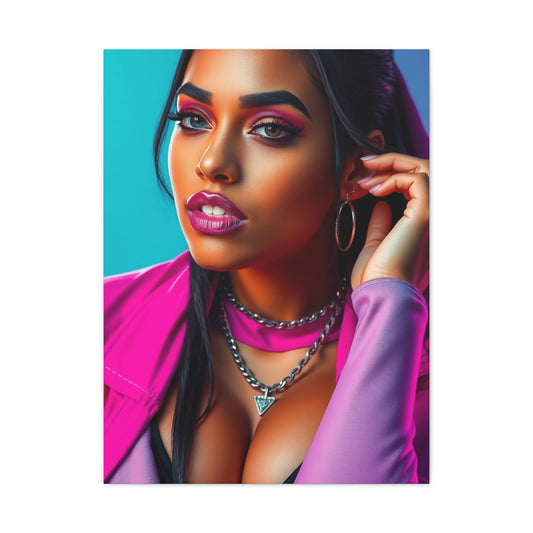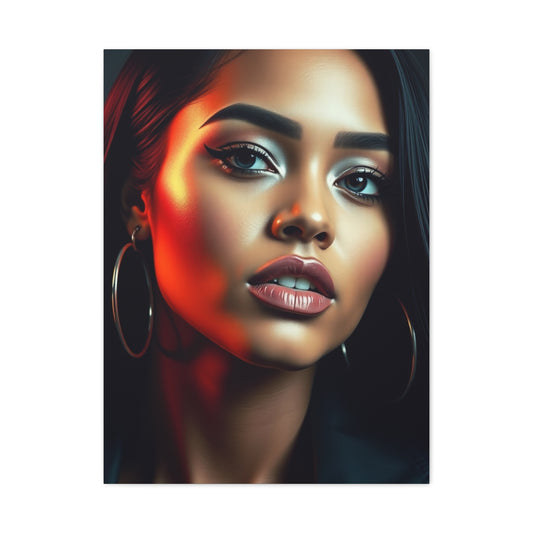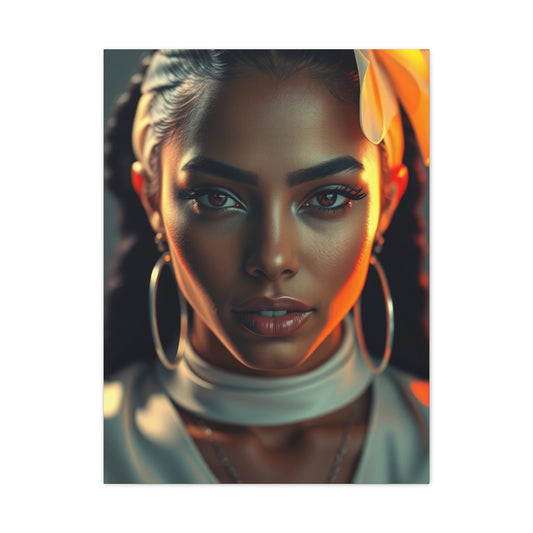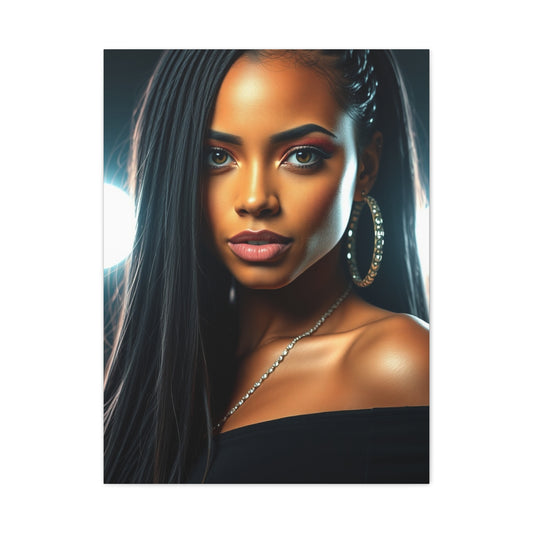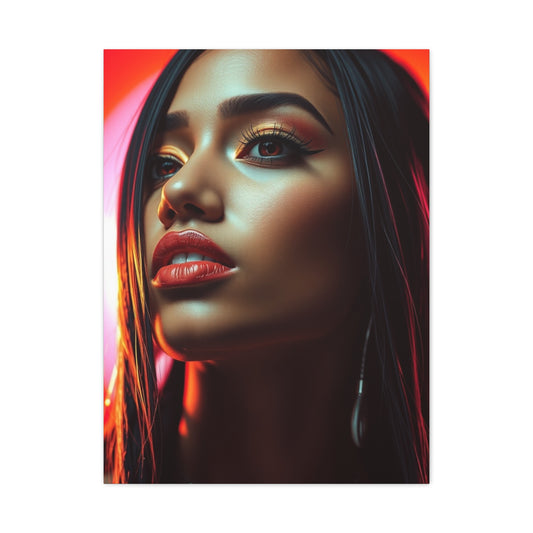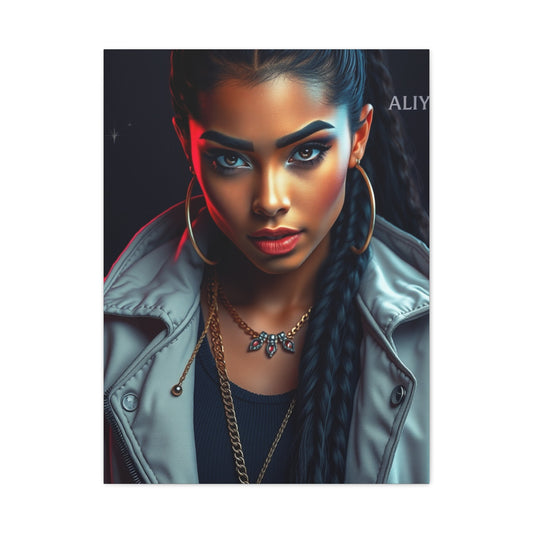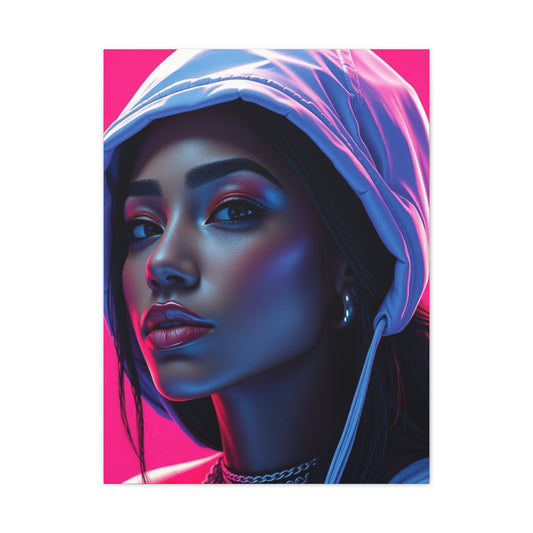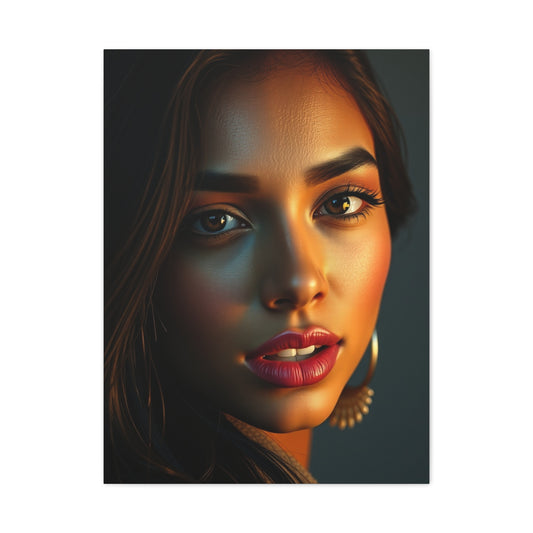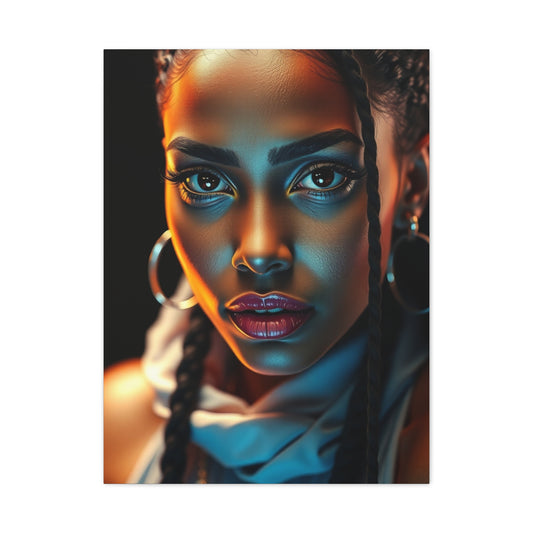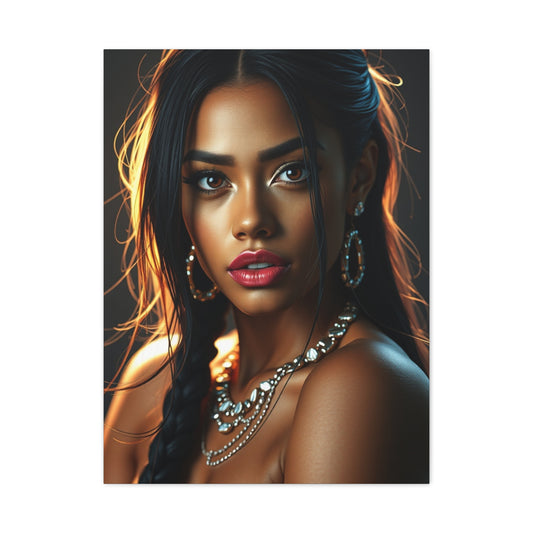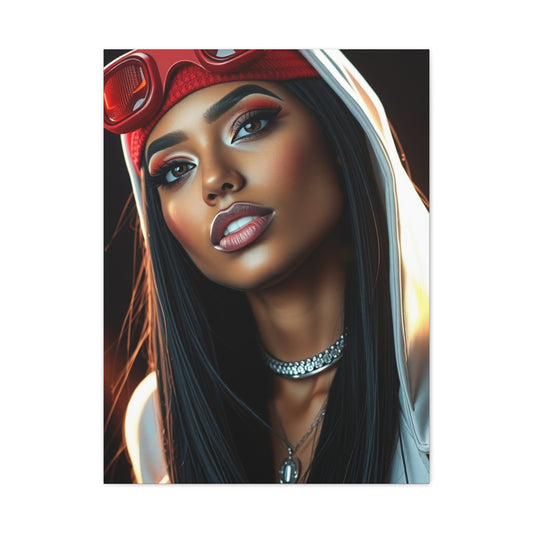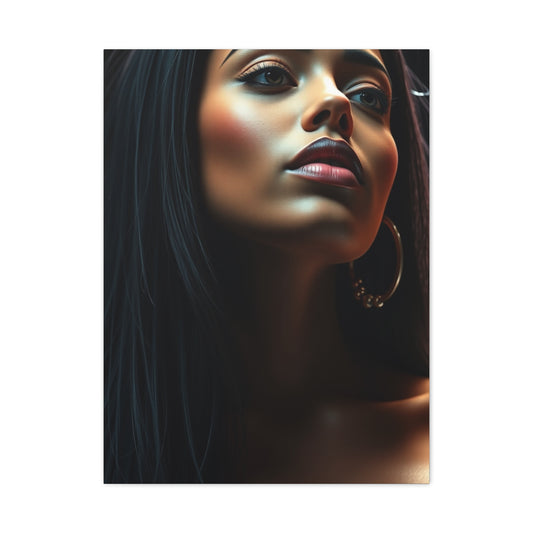Inspire Your Home with Iconic Aaliyah Wall Art and Decor Tips
The legendary R&B princess continues to inspire countless admirers worldwide, and incorporating her essence into interior design has become an increasingly popular trend among music enthusiasts and art collectors alike. Creating a tribute to this iconic performer through carefully curated wall art transforms any ordinary space into a sanctuary celebrating her enduring legacy and timeless appeal.
Contemporary interior design embraces the fusion of musical heritage with modern aesthetics, offering endless possibilities for honoring beloved artists through thoughtfully selected artwork. The process of integrating tribute pieces requires careful consideration of color schemes, spatial arrangements, and thematic coherence to achieve a harmonious balance between personal expression and sophisticated design principles.
Creative Aaliyah Wall Art Concepts for Every Space
Developing extraordinary wall art concepts begins with understanding the multifaceted nature of artistic expression and how it intersects with personal devotion to musical legends. The contemporary approach to tribute art encompasses various mediums, from traditional photography to abstract interpretations that capture the essence rather than literal representation.
Photographic portraits remain the most popular choice among collectors, offering authentic glimpses into pivotal moments throughout her career. These images range from professional studio sessions to candid backstage captures, each telling a unique story about her evolution as an artist and cultural icon. High-quality prints of performance shots showcase her dynamic stage presence, while intimate portraits reveal the softer, more contemplative aspects of her personality.
Abstract artistic interpretations provide another compelling avenue for wall decoration, allowing contemporary artists to reimagine her influence through bold color palettes, geometric patterns, and symbolic representations. These pieces often incorporate elements associated with her signature style, such as flowing fabrics, urban landscapes, or musical notations transformed into visual art.
Typography-based designs celebrate memorable lyrics and quotes, transforming powerful words into visually striking compositions. These artistic pieces combine calligraphy, graphic design, and meaningful text to create conversation starters that resonate with fellow admirers while adding intellectual depth to any room's atmosphere.
Mixed media collages offer versatility for those seeking unique, one-of-a-kind pieces that blend various artistic elements. These compositions might combine photographs, fabric swatches reminiscent of her fashion choices, musical sheet notation, and contemporary design elements to create layered, textured artwork that rewards closer examination.
Digital art representations have gained tremendous popularity in recent years, as talented artists create stunning tributes using modern technology. These pieces range from photorealistic digital paintings to stylized illustrations that emphasize particular aspects of her persona, offering fresh perspectives on familiar imagery while maintaining artistic integrity and emotional impact.
Honoring Musical Heritage Through Artistic Expression
Celebrating musical legends through visual art requires a delicate balance between reverence and creativity, ensuring that tribute pieces maintain authenticity while contributing meaningfully to contemporary interior design. The process involves understanding both the artistic subject and the space where the artwork will reside, creating harmony between personal passion and aesthetic sensibility.
The selection process begins with identifying key themes and visual elements that best represent the subject's essence. For Aaliyah tributes, these might include her signature hairstyles, fashion choices, performance poses, or symbolic elements associated with her music and cultural impact. Understanding these visual signatures helps in choosing or commissioning pieces that feel genuine and respectful.
Color psychology plays a crucial role in creating effective tribute spaces. Warm earth tones often associated with her style can create intimate, welcoming environments, while cooler palettes might emphasize the sophisticated, contemporary aspects of her artistic legacy. The key lies in selecting colors that complement both the artwork and the surrounding decor while evoking the desired emotional response.
Scale and proportion considerations ensure that tribute pieces command appropriate attention without overwhelming other design elements. Large statement pieces work well as focal points in spacious rooms, while smaller, more intimate pieces suit personal spaces like bedrooms or home offices. The goal is creating visual impact that enhances rather than dominates the overall design scheme.
Lighting design significantly impacts how artwork appears and how effectively it communicates its intended message. Proper illumination can transform ordinary prints into stunning focal points, while poor lighting can diminish even the most exceptional pieces. Consider both natural light patterns throughout the day and artificial lighting options to ensure optimal presentation at all times.
Authentication and quality control become particularly important when dealing with tribute art, as the market contains numerous reproductions of varying quality. Investing in high-resolution prints, original artwork, or officially licensed merchandise ensures both visual excellence and ethical collection practices that honor the artist's estate and legacy.
Curating Gallery Wall Arrangements with Musical Themes
Gallery walls represent one of the most sophisticated approaches to displaying multiple pieces while creating cohesive visual narratives that tell compelling stories about musical influence and personal taste. The art of arrangement requires careful planning, patience, and an eye for balance that considers both individual pieces and their collective impact.
Planning begins with assessing available wall space and determining the overall composition shape, whether rectangular, organic, or following architectural features like staircases or built-in furniture. The most successful gallery walls feel intentional rather than randomly assembled, with each piece contributing to a larger visual conversation about the subject matter.
The foundation of exceptional gallery arrangements lies in establishing visual anchors, typically larger pieces that serve as focal points around which smaller elements cluster. These anchor pieces might feature the most iconic imagery or represent significant career moments, providing stable reference points that guide viewers through the composition while maintaining visual hierarchy.
Spacing consistency creates professional appearance and ensures each piece receives appropriate attention without competing destructively with neighboring elements. Professional guidelines suggest maintaining uniform gaps between frames, typically ranging from two to four inches depending on the overall scale and formality of the arrangement.
Frame selection significantly impacts the overall aesthetic, with choices ranging from matching frames for formal uniformity to deliberately mismatched options that create dynamic, eclectic atmospheres. The key lies in maintaining enough consistency to feel intentional while incorporating enough variation to maintain visual interest and prevent monotony.
Color distribution throughout the arrangement ensures balanced visual weight and prevents any single area from becoming overpowering. This might involve distributing warm and cool tones evenly, balancing high-contrast and subtle pieces, or ensuring that no single color dominates large portions of the composition.
Thematic coherence binds diverse pieces together through shared subject matter, artistic style, or emotional tone. For Aaliyah tribute walls, this might mean combining different artistic interpretations of similar themes, mixing photographs from various career periods, or incorporating related musical and cultural elements that expand the narrative beyond individual portraiture.
Integrating Musical Elements with Contemporary Interior Design
Modern interior design increasingly embraces the integration of musical heritage with sophisticated aesthetic principles, creating spaces that feel both personally meaningful and professionally curated. This approach requires understanding how tribute elements can enhance rather than detract from overall design coherence.
The contemporary aesthetic emphasizes clean lines, uncluttered spaces, and purposeful decoration that serves both functional and emotional needs. Aaliyah tribute art fits naturally into this framework when selected and displayed with the same attention to quality and intention applied to other design elements throughout the space.
Color coordination becomes essential when integrating tribute art with existing decor schemes. This doesn't require exact matching but rather thoughtful consideration of how new pieces complement or contrast with established palettes. Successful integration often involves pulling accent colors from the artwork to incorporate into textiles, accessories, or smaller decorative elements throughout the room.
Texture balancing ensures that artistic additions contribute to the overall tactile richness of the space without creating visual chaos. Smooth photographic prints might balance textured fabrics elsewhere in the room, while canvas pieces add organic texture that complements natural materials like wood or stone.
Furniture arrangement should complement rather than compete with wall art, ensuring clear sight lines to important pieces while maintaining functional traffic flow. This might involve repositioning seating to create better viewing angles or adjusting lighting to eliminate glare on reflective surfaces.
Scale relationships between artwork and furnishings create visual harmony that makes spaces feel professionally designed rather than accidentally assembled. Large sofas can anchor substantial artwork, while delicate side tables pair naturally with smaller, more intimate pieces that invite closer examination.
Style bridging allows tribute art to coexist successfully with various decorating approaches, from minimalist contemporary to maximalist eclectic. The key lies in identifying common elements like color, texture, or emotional tone that create connections between seemingly disparate design choices.
Living Room Design Concepts with Musical Tribute Art
Living rooms serve as primary gathering spaces where personal taste intersects with social functionality, making them ideal venues for displaying meaningful artwork that sparks conversation and reflects individual personality. The challenge lies in creating arrangements that feel welcoming to guests while maintaining authentic personal expression.
Focal point creation establishes visual hierarchy that guides attention through the space while highlighting the most significant pieces in the collection. This might involve positioning a large statement piece above the primary seating area or creating a dedicated display wall that becomes the room's artistic centerpiece.
Seating arrangements should facilitate comfortable viewing of artwork while maintaining conversation-friendly configurations. This often means angling chairs slightly toward artistic displays or ensuring that the primary sofa provides optimal viewing angles for the most important pieces in the collection.
Traffic flow considerations ensure that artwork placement doesn't interfere with natural movement patterns through the space while creating opportunities for closer examination of detailed pieces. Strategic placement can actually improve room functionality by drawing attention away from less attractive architectural features or directing focus toward deliberate design elements.
Lighting layering combines ambient, task, and accent lighting to create optimal viewing conditions throughout different times of day and various social occasions. Picture lights, track lighting, or strategically placed table lamps can dramatically enhance artwork visibility while contributing to the overall ambiance.
Seasonal adaptability allows living rooms to evolve throughout the year while maintaining core tribute elements. This might involve rotating smaller pieces, adjusting accent colors through textiles and accessories, or incorporating seasonal elements that complement rather than compete with permanent artistic installations.
Entertainment integration considers how artwork interacts with television screens, sound systems, and other technological elements that serve important functional roles in contemporary living spaces. Successful integration ensures that technology enhances rather than detracts from artistic appreciation while maintaining the room's primary purpose as a comfortable gathering place.
Private Sanctuary Design with Iconic Musical Artwork
Bedrooms represent the most personal spaces within homes, offering opportunities for intimate artistic expression that might feel too private or emotionally vulnerable for public areas. These sanctuaries allow for deeper exploration of personal connection with musical influences while maintaining the restful atmosphere essential for quality sleep and relaxation.
Headboard alternatives utilize large-scale artwork to create dramatic focal points behind beds without requiring traditional furniture pieces. This approach maximizes wall space while creating intimate viewing experiences that can be appreciated from the comfort of the bed itself, making mornings and evenings more personally meaningful.
Color psychology becomes particularly important in bedroom spaces, where artwork choices directly impact mood, energy levels, and sleep quality. Warm, muted tones generally promote relaxation and intimacy, while brighter, more energetic pieces might be reserved for accent walls or areas away from the immediate sleeping zone.
Intimate lighting design ensures that artwork remains visible and appreciable during evening hours without creating harsh illumination that interferes with the room's restful purpose. Soft, warm lighting options like wall sconces, table lamps, or LED strip lighting can provide gentle illumination that enhances artistic appreciation without compromising comfort.
Personal memorabilia integration allows for the inclusion of concert tickets, album covers, or other collectible items alongside traditional wall art, creating deeply personal displays that tell comprehensive stories about musical influence and personal history. These elements might be incorporated into shadow boxes, floating shelves, or custom framing solutions.
Privacy considerations influence both artwork selection and placement, as bedroom displays remain primarily for personal enjoyment rather than public appreciation. This freedom allows for more experimental or emotionally intense pieces that might feel too personal for common areas while maintaining sophisticated design principles.
Storage solutions for rotating collections accommodate changing moods, seasons, or life circumstances while protecting valuable pieces when not on display. This might involve dedicated closet space, archival storage boxes, or modular display systems that allow for easy reconfiguration without damaging artwork or walls.
Choosing Between Framed Prints and Canvas Artwork
The decision between framed prints and canvas artwork significantly impacts both the aesthetic outcome and practical considerations of any artistic installation. Each option offers distinct advantages and challenges that must be weighed against personal preferences, budget constraints, and long-term maintenance requirements.
Framed prints provide traditional elegance and protection for artwork while offering extensive customization options through frame selection, matting choices, and glass options. This format works particularly well for photographic content, where precise detail preservation and color accuracy remain paramount concerns for serious collectors.
The protective qualities of framing extend artwork lifespan significantly, particularly in environments with variable humidity, direct sunlight, or potential physical contact. Quality framing materials and techniques can preserve prints for decades when properly maintained, making this option ideal for valuable or irreplaceable pieces.
Customization possibilities with framed pieces extend far beyond simple frame selection, encompassing mat colors and textures, glass types including anti-reflective and UV-filtering options, and mounting techniques that enhance presentation quality. These choices allow for precise control over final appearance and long-term preservation characteristics.
Canvas artwork offers contemporary appeal with its frameless presentation and substantial physical presence that creates immediate visual impact. The texture and dimensionality of canvas pieces contribute unique aesthetic qualities that complement modern interior design trends while maintaining artistic authenticity.
Maintenance requirements differ significantly between these options, with framed pieces requiring occasional glass cleaning and frame dusting, while canvas pieces need gentle cleaning techniques and protection from direct contact that might damage surface textures. Understanding these requirements helps in making informed decisions based on lifestyle and maintenance preferences.
Cost considerations vary depending on quality levels, with basic framing often exceeding canvas printing costs, while premium framing options can cost several times more than high-quality canvas alternatives. However, the long-term value proposition might favor framed pieces due to superior protection and potential for preservation.
Installation requirements also differ, with framed pieces typically requiring more robust hanging hardware due to increased weight from glass and framing materials, while canvas pieces often mount more easily but may require special considerations for larger formats or heavy-duty stretcher bars.
Hands-On Creative Projects for Personal Tribute Art
Creating original tribute artwork provides deeply satisfying opportunities for personal expression while developing artistic skills and producing completely unique pieces that reflect individual interpretation and creativity. These projects range from simple crafting activities to more complex artistic endeavors requiring specialized tools and techniques.
Collage creation represents one of the most accessible DIY approaches, combining readily available materials like magazine clippings, printed images, decorative papers, and personal memorabilia into cohesive artistic compositions. This technique allows for incredible creativity while requiring minimal artistic training or expensive materials.
The foundation of successful collages lies in thoughtful composition planning, beginning with rough sketches that establish overall layout and visual flow. Consider creating focal points, balancing colors and textures, and ensuring that individual elements contribute to rather than detract from the overall message and aesthetic appeal.
Material selection for collages extends beyond obvious choices like photographs and magazine clippings to include fabric swatches, sheet music, ticket stubs, and other memorabilia that adds personal significance and textural interest. The key lies in choosing materials that work harmoniously while telling meaningful stories about personal connection and musical influence.
Adhesive techniques and archival considerations ensure that DIY projects maintain their appearance and integrity over time. Using acid-free materials, appropriate adhesives, and protective backing prevents deterioration while maintaining the ability to make future modifications or repairs as needed.
Painting projects offer more advanced creative opportunities for those comfortable with traditional artistic mediums. These might range from simple acrylic portrait attempts to abstract interpretations that capture emotional or symbolic elements rather than literal representation.
Preparation steps for painting projects include selecting appropriate canvases or surfaces, gathering quality materials, and creating preliminary sketches that establish composition and color schemes. Even beginners can achieve satisfying results with patience, practice, and willingness to embrace the learning process inherent in artistic development.
Mixed media experiments combine various artistic techniques and materials to create unique, multidimensional pieces that reflect personal creativity and interpretation. These might incorporate painting, collage, typography, and three-dimensional elements to produce artwork that changes appearance based on viewing angle and lighting conditions.
Seasonal Decorative Approaches Featuring Musical Tributes
Seasonal decoration provides opportunities to refresh artistic displays throughout the year while maintaining core tribute elements that provide consistency and emotional connection. This approach prevents artistic fatigue while allowing for creative expression that reflects changing moods, celebrations, and natural cycles.
Spring refresh concepts might emphasize renewal, growth, and fresh beginnings through lighter color palettes, floral elements, and imagery that captures optimistic, forward-looking themes. This could involve rotating artwork to emphasize pieces with brighter colors, outdoor settings, or themes of hope and aspiration.
Summer arrangements often celebrate energy, vitality, and peak creativity through bold colors, dynamic compositions, and pieces that capture the height of artistic expression. Beach-themed elements, concert imagery, or photographs from summer performances can create atmosphere that reflects the season's vibrant energy.
Autumn transitions provide opportunities to incorporate warmer, more contemplative tones that reflect the season's introspective mood. Rich burgundies, deep golds, and earth tones can be emphasized through careful artwork selection and complementary accessory choices that create cozy, reflective environments.
Winter displays might focus on intimate, sophisticated presentations that emphasize the enduring nature of artistic legacy. Deeper colors, more formal presentations, and emphasis on studio portraits or artistic interpretations can create atmosphere appropriate for longer indoor periods and contemplative moods.
Holiday integration allows for temporary additions that celebrate special occasions without permanently altering core tribute arrangements. This might involve incorporating seasonal flowers, candles, or decorative elements that complement existing artwork while acknowledging important dates or personal celebrations.
Transition strategies ensure smooth seasonal changes while maintaining the fundamental integrity of tribute displays. This requires planning storage solutions for rotated pieces, developing systematic approaches to arrangement changes, and maintaining consistent quality standards regardless of seasonal themes.
Capturing Legendary Moments Through Visual Storytelling
Iconic moments in musical history provide rich source material for wall art that tells compelling stories while celebrating artistic achievement and cultural impact. These pieces often become conversation starters that allow admirers to share their appreciation while educating others about significant contributions to music and culture.
Performance captures from significant concerts, television appearances, and music video productions offer authentic documentation of artistic evolution and career highlights. These images provide glimpses into creative processes while showcasing the development of signature styles and artistic maturity over time.
Behind-the-scenes photography reveals more intimate aspects of artistic life, including studio sessions, rehearsals, and quiet moments that contrast with public performance imagery. These pieces add depth and humanity to tribute collections while providing insight into the person behind the public persona.
Collaboration imagery documents important relationships with other artists, producers, and creative professionals who contributed to artistic development and career success. These pieces celebrate not just individual achievement but also the collaborative nature of musical creation and the importance of artistic community.
Fashion evolution documentation showcases changing styles and aesthetic development throughout different career phases. These pieces appeal to fashion enthusiasts while demonstrating how personal style contributed to overall artistic identity and cultural influence.
Award ceremony and recognition moments capture formal acknowledgment of artistic achievement while documenting historical significance within the broader musical landscape. These images serve as reminders of professional accomplishments while inspiring current and future artists.
Candid lifestyle photography provides glimpses into personal moments that humanize artistic legends while maintaining appropriate respect for privacy and dignity. These pieces often resonate most deeply with admirers because they reveal shared humanity beneath extraordinary talent.
Professional and Creative Workspace Inspiration
Office and creative spaces benefit tremendously from inspirational artwork that motivates productivity while reflecting personal values and aesthetic preferences. Musical tribute art can transform mundane work environments into inspiring sanctuaries that fuel creativity and maintain motivation throughout challenging projects.
Productivity enhancement through inspirational imagery relies on psychological principles that connect visual stimuli with emotional and motivational responses. Carefully selected tribute art can serve as daily reminders of artistic excellence, perseverance, and creative achievement that inspire similar dedication in professional endeavors.
Motivation maintenance requires artwork that continues to inspire even after extended exposure, suggesting pieces with sufficient complexity and emotional depth to reward ongoing contemplation. Abstract interpretations, detailed photography, or pieces with multiple visual layers often provide this sustained inspirational value.
Creative stimulation benefits from artwork that encourages innovative thinking and artistic risk-taking. Pieces that capture dynamic movement, experimental artistic techniques, or moments of creative breakthrough can subconsciously encourage similar approaches to current projects and challenges.
Professional appropriateness ensures that workspace artwork maintains suitable tone for business environments while still providing personal inspiration and motivation. This balance might involve selecting more subtle pieces for formal offices while allowing greater creative freedom in private studios or home offices.
Conversation facilitation through thoughtfully selected artwork can improve professional relationships while sharing personal interests in appropriate contexts. Pieces that prompt questions or comments from colleagues can serve as relationship-building tools while maintaining professional boundaries.
Focus enhancement involves selecting artwork that promotes concentration rather than distraction, suggesting pieces with calming colors, balanced compositions, and themes that promote sustained attention rather than restless energy. The goal is creating environment that supports rather than undermines professional productivity.
Thoughtful Gift Concepts for Music Enthusiasts
Aaliyah wall art makes exceptional gifts for music lovers, offering personal meaning and lasting value that demonstrates thoughtfulness and understanding of recipient interests. Successful gift selection requires consideration of personal taste, existing decor, and the relationship between giver and recipient.
Recipient assessment involves understanding existing collections, decorating styles, and personal preferences without explicitly revealing gift intentions. This might require observing existing artwork during visits, noting color preferences, or engaging in casual conversations about artistic interests and decorating approaches.
Significance levels vary depending on relationships and occasions, with intimate gifts like custom artwork appropriate for close family members or romantic partners, while more general pieces work well for friends, colleagues, or acquaintances who share musical interests.
Presentation quality significantly impacts gift reception, suggesting investment in professional framing, attractive packaging, or custom presentation materials that demonstrate care and attention to detail. The presentation itself becomes part of the gift experience and reflects the giver's respect for both the recipient and the artwork.
Personalization options range from custom framing choices that reflect recipient preferences to commissioned artwork that incorporates specific elements meaningful to the relationship or shared experiences. These touches transform generic purchases into deeply personal expressions of understanding and affection.
Occasion appropriateness guides selection toward pieces suitable for specific celebrations, whether birthdays, holidays, graduations, or achievements. The artwork should feel appropriate for the occasion while maintaining lasting relevance beyond the immediate celebration.
Educational components can enhance gift value by including information about the artwork, artist, or historical context that helps recipients appreciate and understand their new pieces more fully. This might involve printed materials, digital resources, or personal explanations that add depth to the gift experience.
Future expansion considerations involve selecting pieces that could serve as foundations for larger collections, potentially inspiring recipients to continue building their own tribute displays over time. This approach transforms single gifts into starting points for ongoing artistic journeys.
Color Theory and Emotional Impact in Musical Art
Understanding color psychology and its application to musical tribute art enhances both aesthetic appeal and emotional resonance, creating spaces that effectively communicate intended moods while supporting desired psychological responses. This knowledge enables more sophisticated artistic choices that serve both decorative and emotional functions.
Warm color palettes, including reds, oranges, and yellows, create energetic, intimate atmospheres that can evoke feelings of warmth, passion, and creativity. These colors work particularly well in social spaces or areas designated for creative activities, where stimulating energy feels appropriate and beneficial.
Cool color schemes, featuring blues, greens, and purples, promote calm, contemplative moods that support relaxation and introspection. These palettes suit spaces designated for rest, meditation, or quiet reflection, where peaceful energy enhances the intended function.
Neutral foundations provide versatile backgrounds that allow artwork to command attention while maintaining sophisticated, timeless appeal that won't quickly feel dated or overwhelming. Grays, beiges, and whites create clean canvases that showcase artwork while maintaining flexibility for future changes or additions.
Contrast utilization creates visual drama and ensures that important artistic elements receive appropriate attention within overall design schemes. High contrast between artwork and backgrounds creates bold, contemporary aesthetics, while subtle contrast produces more traditional, harmonious appearances.
Monochromatic sophistication involves working within single color families while varying saturation, brightness, and texture to create depth and interest without chromatic complexity. This approach often produces elegant, cohesive results that feel professionally designed while remaining personally meaningful.
Accent color integration allows for strategic use of bold colors that complement rather than compete with primary tribute artwork. These accents might appear in accessories, textiles, or smaller decorative elements that tie together overall color schemes while providing visual excitement.
Psychological impact considerations recognize that color choices directly influence mood, energy levels, and emotional responses to spaces. Understanding these effects allows for deliberate creation of environments that support intended activities while honoring musical influences in psychologically beneficial ways.
Artistic Techniques and Mediums for Tribute Creation
Contemporary artistic expression encompasses numerous techniques and mediums that offer unique opportunities for creating original tribute artwork that reflects personal interpretation while demonstrating artistic skill and creativity. Understanding these options enables more informed decisions about commissioning work or undertaking personal creative projects.
Digital art creation has revolutionized artistic possibilities while maintaining accessibility for artists with various skill levels and equipment limitations. Tablet-based drawing applications, computer graphics software, and digital painting techniques produce results that can rival traditional mediums while offering unlimited revision possibilities and easy reproduction options.
Traditional painting techniques, including oil, acrylic, and watercolor, provide time-tested approaches to artistic creation that offer unique textural qualities and emotional depth. Each medium presents distinct characteristics that suit different artistic intentions and aesthetic preferences while requiring specific skills and equipment.
Photography manipulation and artistic enhancement transform existing images into unique artistic interpretations through digital editing techniques that emphasize particular aspects while maintaining recognizable source material. These approaches bridge documentary photography and artistic interpretation to create pieces that feel both authentic and creatively original.
Mixed media experimentation combines various artistic techniques and materials to produce multidimensional pieces that engage viewers through textural variety and visual complexity. These approaches might incorporate painting, collage, typography, and three-dimensional elements to create artwork that rewards close examination and sustained appreciation.
Printmaking techniques, including screen printing, lithography, and digital printing, offer reproduction possibilities that maintain artistic quality while enabling broader distribution and accessibility. Understanding these processes helps in evaluating commercial artwork while informing decisions about custom projects and limited edition acquisitions.
Textile art integration incorporates fabric, embroidery, and fiber arts into tribute pieces that add warmth and tactile interest to wall displays. These approaches work particularly well for creating intimate, personal pieces that reflect both artistic appreciation and crafting skills.
Sculpture and three-dimensional elements extend tribute art beyond traditional flat wall displays to include standing pieces, wall-mounted sculptures, or mixed media installations that interact with architectural features and room lighting to create dynamic, changing appearances throughout the day.
Cultural Impact and Historical Context in Artistic Tributes
Understanding the broader cultural significance and historical context of musical influences enhances the depth and meaning of tribute artwork while ensuring that displays reflect appropriate appreciation for artistic legacy and cultural contribution. This knowledge informs both selection and presentation decisions that honor subjects while educating viewers.
Musical evolution documentation traces artistic development through different career phases, showcasing growth, experimentation, and stylistic changes that reflect both personal development and broader cultural shifts. These pieces provide educational value while celebrating the dynamic nature of artistic expression.
Fashion influence recognition acknowledges the significant impact that musical artists often have on style trends, beauty standards, and fashion industry development. Artwork that captures signature looks, innovative styling choices, or fashion collaboration can appeal to style enthusiasts while documenting cultural influence beyond musical contributions.
Social impact representation explores how musical artists influence social consciousness, cultural conversations, and community development through their platform and artistic choices. Tribute art might incorporate imagery or themes that reflect these broader contributions while maintaining focus on artistic appreciation.
Technical innovation celebration recognizes groundbreaking production techniques, musical experimentation, or industry innovations that influenced subsequent artists and musical development. These pieces might incorporate visual elements that reference recording techniques, musical arrangements, or collaborative approaches that advanced the art form.
Cross-cultural influence documentation acknowledges how musical artists transcend geographic and cultural boundaries to influence global audiences and artistic communities. This might involve artwork that incorporates international elements or demonstrates appreciation from diverse cultural perspectives.
Historical timeline placement situates individual artists within broader musical movements, cultural periods, and social contexts that influenced their development while demonstrating their unique contributions to ongoing artistic evolution. This approach provides educational value while maintaining personal appreciation and emotional connection.
Legacy continuation themes explore how artistic influence extends beyond original careers to inspire subsequent generations of artists, fans, and cultural contributors. These pieces might incorporate imagery or themes that demonstrate ongoing relevance and continued inspiration drawn from historical contributions.
Advanced Display Techniques and Presentation Methods
Sophisticated presentation techniques can transform ordinary artwork into museum-quality displays that command attention while demonstrating serious appreciation for both the subject matter and artistic medium. These approaches require additional planning and investment but provide correspondingly enhanced visual impact and professional appearance.
Lighting design principles recognize that optimal illumination can dramatically enhance artwork appreciation while poor lighting can diminish even exceptional pieces. Professional techniques include adjustable track lighting, picture lights, and accent lighting that provide even illumination without creating glare, shadows, or color distortion.
Wall preparation techniques ensure optimal mounting surfaces that provide security while preventing damage to both artwork and wall surfaces. This might involve installing specialized hanging systems, reinforcing wall structures for heavy pieces, or applying protective treatments that facilitate future changes without permanent alteration.
Grouping strategies for multiple pieces require understanding visual balance, thematic coherence, and spatial relationships that create pleasing compositions rather than chaotic accumulations. These techniques draw from professional gallery design principles while adapting to residential scale and personal preferences.
Matting and mounting considerations extend beyond basic framing to include specialized techniques that enhance presentation while providing optimal protection. This might involve custom mat colors, multiple mat layers, or mounting techniques that create visual depth and emphasize important artistic elements.
Climate control recognition acknowledges that artwork longevity depends significantly on environmental factors including humidity, temperature stability, and air quality. While residential environments can't achieve museum standards, understanding these factors enables better placement decisions and protective measures.
Security measures for valuable collections balance accessibility for daily appreciation with protection from theft, damage, or environmental hazards. This might involve discrete alarm systems, specialized mounting hardware, or display cases that provide protection while maintaining visual accessibility.
Documentation practices ensure that collection information, provenance, and maintenance records remain available for insurance purposes, future sales, or estate planning. This includes photographing pieces, maintaining purchase records, and documenting any conservation or maintenance activities.
Interior Architecture Integration and Spatial Planning
Successful integration of tribute artwork with existing architecture requires understanding how artistic elements interact with structural features, room proportions, and architectural styles to create harmonious environments that feel intentionally designed rather than accidentally assembled.
Architectural feature enhancement utilizes artwork placement to emphasize positive architectural elements while minimizing attention to less attractive features. This might involve positioning pieces to draw attention toward attractive built-ins while directing focus away from awkward angles or unavoidable structural elements.
Scale relationships between artwork and architectural features ensure appropriate visual balance that prevents either element from overwhelming the other. Large-scale pieces can complement high ceilings and spacious rooms, while smaller arrangements suit intimate spaces with lower ceilings or limited wall space.
Style coordination considers how tribute artwork interacts with existing architectural styles, whether contemporary, traditional, or eclectic. Successful integration often involves identifying common elements like color, texture, or historical period that create connections between diverse design elements.
Traffic flow optimization ensures that artwork placement enhances rather than impedes natural movement through spaces while creating opportunities for appreciation that don't interfere with daily activities. Strategic placement can actually improve room functionality by directing attention and movement in beneficial ways.
Proportional planning considers room dimensions, ceiling height, and furniture scale to determine appropriate artwork sizes and arrangement patterns that feel balanced and intentional. This mathematical approach prevents common mistakes like selecting pieces that are too small for large walls or too overwhelming for intimate spaces.
Sight line management ensures that important pieces remain visible from primary viewing positions while considering how arrangements appear from various angles throughout the room. This three-dimensional thinking creates displays that work effectively from multiple perspectives rather than optimizing for single viewing positions.
Conclusion:
Incorporating Aaliyah-inspired wall art into home interiors is far more than a decorative trend—it is a heartfelt tribute to one of R&B’s most iconic figures. Her artistry, style, and cultural influence continue to resonate, making her an ideal subject for creating spaces that are both visually compelling and emotionally meaningful. Thoughtfully curated artwork transforms ordinary walls into intimate galleries that celebrate her timeless impact while reflecting the personal taste and creative vision of the homeowner.
From photographic portraits capturing her dynamic performances to abstract interpretations that translate her essence into color, shape, and symbolism, each piece contributes a unique narrative. Mixed media, typography, and digital art expand the possibilities, offering collectors and enthusiasts multiple ways to honor her legacy while adding depth and personality to any room. When integrated thoughtfully, these artworks do more than adorn walls—they tell stories, evoke memories, and spark conversations that connect past and present musical influence.
Designing around Aaliyah-themed art requires careful attention to color palettes, spatial planning, and lighting. Harmonizing warm, inviting tones or cool, sophisticated shades with surrounding décor ensures that tribute pieces resonate without overwhelming the space. Proper scale, frame selection, and lighting further enhance visual impact, transforming each artwork into a focal point that commands attention while maintaining aesthetic cohesion. Seasonal adaptations, rotating displays, and creative placement strategies allow for continuous freshness, making every room feel dynamic and alive.
Moreover, Aaliyah-inspired art can seamlessly extend across multiple spaces—from living rooms that host social gatherings to private bedrooms serving as personal sanctuaries. In professional or creative workspaces, her imagery fosters inspiration, motivation, and emotional resonance, reinforcing a connection between artistry and productivity. Thoughtful gifting of tribute art provides additional opportunities to share admiration and create meaningful, lasting impressions for friends, family, or fellow fans.
Ultimately, integrating Aaliyah wall art into home interiors embodies a harmonious fusion of artistic homage and contemporary design. It celebrates her enduring influence, bridges personal expression with aesthetic sophistication, and inspires environments that are vibrant, engaging, and uniquely reflective of her cultural and musical legacy. By embracing her iconic presence through art, collectors and enthusiasts alike can craft spaces that honor her contributions, evoke emotion, and ensure that her memory continues to illuminate homes with beauty, creativity, and enduring inspiration.

